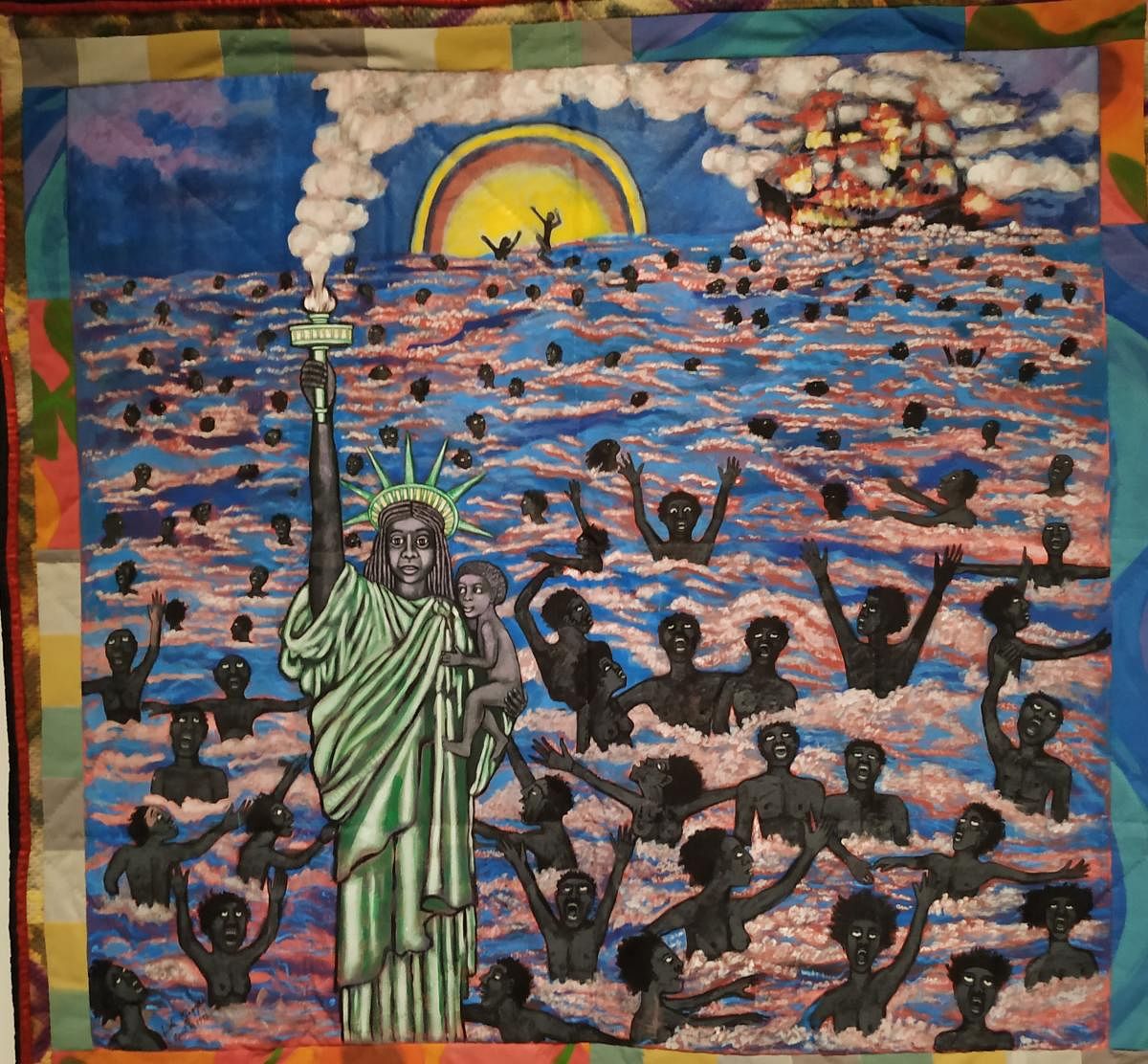

A quilt spells warmth and brings memories of mothers and grannies stitching with loving fingers to ensure a comfortable sleep. But a quilt can also become an object for expressing inner turmoil through paintings, its borders full of words to write the history of a people. At the New Museum of New York, an exhibition of works by the renowned Black artist, activist, and feminist Faith Ringgold (b.1930) one comes across an innovative use of the quilt as a backdrop for expressing thoughts, largely on the history of the Black community in the US, which she has witnessed through her long life.
This is the first time that the artist’s works in various mediums spanning 50 years have been put together for the exhibition: Faith Ringgold: American People. As an artist, author, educator, and organiser, Faith links the multi-disciplinary aspects of the Harlem Renaissance to the political art of the young Black artists working today. During the 1960s, Faith created some of the most indelible artwork of the Civil Rights era by melding her own unique style of figurative painting with a bold, transformative approach to the language of protest.
Through her “super-realist” visual language, as she describes it, Faith captures the racial and gender divisions in America of the 1960s through the “American People” and “ Black Light” series. The painting The Flag is Bleeding is evocative enough to need explaining what she wants to say. Her Bessie’s Blues painting on quilt-work commemorates Blues singer Bessie Smith. It is arranged in the same gridded fashion as renowned contemporary artist Andy Warhol did by depicting women’s beauty through images of Marilyn Monroe, Jacqueline Kennedy and Elizabeth Taylor. But while a homage to Warhol, it is also a kind of critique of the narrow view of women’s beauty and glamour in the media which excluded Black women.
Though she was actively involved in the Women’s Lib Movement in the 70s, she and many others found the predominantly white feminist movement biased and identified herself as a Black feminist. At the same time, Faith does not hesitate to take a critical look at discrimination against women even within the Black activism movement. At one time, even in Harlem — a Black major area in New York, the artists’ community did not give much importance to the women artists.
Transcending forms
Faith challenged accepted hierarchies of art and craft through her experimental quilt paintings and undertook a deeply studied reimagining of art history to produce narratives that bear witness to the complexity of the American experience.
She started working with her mother who had a lasting influence on her and developed it further. She has created more than a hundred quilt paintings during her lifetime which comprise elements of autobiographical and fictional themes relating to the African-American life in the US.
In these ‘story quilts’ Faith incorporates detailed handwritten texts into her painted and sewn imagery evoking oral histories, folk tales, and vernacular quilt making tradition of the African-American community of the South. The large canvases with sewn fabric borders are influenced by Tibetan thangkas which display her embrace of non-Western sensibilities as she tries to transcend a predominantly white art historical tradition to find forms more suitable for the radical exploration of gender and racial identity. Somehow her quilt works also bring into mind the kantha work of Bengal (including Bangladesh) where rural women turned out patchwork quilts using old sarees or leftover materials mainly for babies but for adults as well. Though they were everyday use objects, the women employed their imagination to tell stories creating images of life around them that showcased their artistic bent despite the heavy workload at home. Today, of course, kantha work has gained and flourished thanks to art and craft revivalists.
Relevant art
Faith’s French Collection is another example of her quizzical look at art per se from the point of view of a Black artist. The Women’s House (1971) on display at Faith’s retrospective was the first of her public art commissions where she honours the women incarcerated at the Correctional Home for Women on Riker’s Island in New York. She later stated that it was the beginning of her feminist approach to painting. She stated “…these women have been rejected by society, they are the bloodguilt of society.” The geometric pattern of the composition resonated with the African Kuba painting style. Long in the planning, interrupted by the pandemic, Faith Ringgold’s Retrospective showcases how her works are as relevant, as way back in the 70s, with issues of racial and gender discrimination still very much in the air.